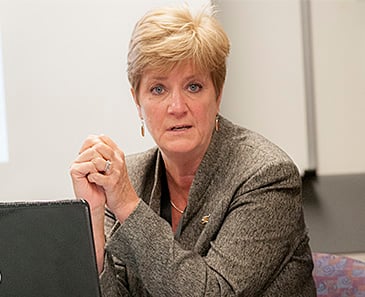As health care moves into the era of the supercomputer and electronic health records (EHR), medical education is incorporating health information technology, virtual patients and more innovative learning methods into their curricula. Some of these ideas were shared at a recent AMA consortium meeting for schools that received grants through the AMA’s Accelerating Change in Medical Education initiative.
Students at one of the Indiana University School of Medicine’s campuses will get immediate experience using EHRs populated with real-time patient data. The school developed a teaching EHR that is a clone of an actual clinical care EHR, kept in sync with one another to reflect changes in health care delivery, such as the meaningful use program. Patient names and identifying information are scrambled to keep it HIPAA-compliant. New York University School of Medicine is working on a similar project, using de-identified data from NYU Langone Medical Center physician network practices.
Other schools are using technology in different ways, such as Vanderbilt University School of Medicine’s learning portfolio. The school’s technology infrastructure collects learner experiences and assessments in the portfolio and aggregates the data immediately to make it easy for educators to quickly see real-time statistics. Advisers known as portfolio coaches help students reflect on their progress and assess their learning goals.
“I can hit a button and get an aggregate, real-time report on what students’ assessments are on a certain idea and their learning goals around different competencies,” said Anderson Spickard, III, MD, associate professor of medicine and biomedical informatics at Vanderbilt (pictured left). “Everything goes into that portfolio … students reflect on it and assess themselves, and portfolio coaches do the same.”
The University of Michigan Medical School is “creating a digital petri dish for experimentation, learning and training” with its move toward virtual patients, said Patricia Abbott, PhD, associate professor in the University of Michigan School of Nursing (pictured left).
The school is testing single-player educational role-playing games in which students can use avatars to practice interviewing new patients. There’s also the Wolverine Clinic, an online clinic that exists in the virtual world of Second Life. Avatars of other users can visit the clinic to be “treated” by medical students, all virtually.
Michigan also is working toward real-time systems training as a way to encourage interprofessional education, getting students from across the health professions systems accustomed to effectively using EHRs.
“Most nurses and doctors think of EHRs as a way of documenting and collecting,” Abbot said. “We need to flip that and teach students to use it to transform and improve.”
By exposing students to EHRs early in their education, teaching students how to effectively use health care systems and encouraging technological innovation, the consortium schools hope they can develop real digital solutions that all medical schools could implement soon.





